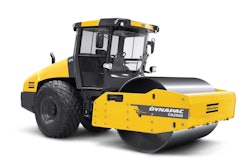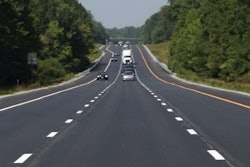The Association of Equipment Manufacturers (AEM) and the Northwestern University Transportation Center have released a study that reviews future transportation infrastructure possibilities and what would be needed to fulfill the needs of these systems.

“The objective of the study is not to predict the future, but to frame scenarios and trends that will inform the public and policymakers about what is possible,” says Ron De Feo, CEO of Kennametal and chairman of AEM’s Infrastructure Vision 2050 Task Force. “AEM and its members will use this study to articulate the factors and trends that will shape a national, long-term vision for U.S. infrastructure. There is much to discuss, debate and, most importantly, decide.”
De Feo wrote in the report’s preface that funding and political courage are the two main factors needed for future U.S. transportation infrastructure needs. He added that a core belief of infrastructure excellence advocates have a core belief that “properly planned infrastructure investment should pay for itself.”
“We cannot rely on the public sector alone to solve this problem,” he writes. “As this study illustrates, what is needed is a strong partnership and deep collaboration between public and private sectors to make significant and valuable progress in determining how this country and its economy will move in the year 2050.
“Quick and persistent work is needed to catch up to the accelerating rate at which technology is advancing. These advances provide major opportunities and meaningful solutions to some of the biggest transportation infrastructure problems we face,” De Feo continues. “Each component of a long-term vision must include the latest in technological innovations, but also what will be in the pipeline ten, twenty, and even thirty years from now. Relatedly, we must convert the excitement these innovations are generating into a widespread public commitment to reaching a cohesive vision that ensures shared prosperity among all communities and all industries. An effective and efficient infrastructure will bring our people together and further improve commerce.”
The entire report, as well as an executive summary, is available for download at www.aem.org/IV2050.











